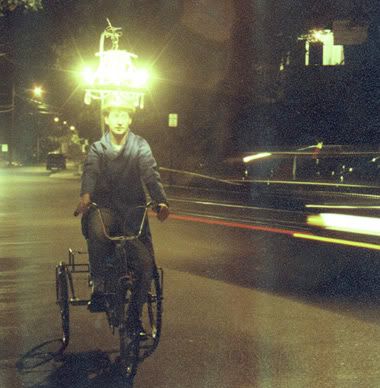
The fall semester already begins to accelerate toward dazzling extremes — extremes of work load, extremes of red and gold, trickling in from the tips of the once temperate green leaves, extremes of cognitive activity and collegiate spirit, and of cold, and the extreme of being pressed to see and make choices, the vast number of choices that manifest on exam sheets in multiple choice bodies and choices that exist as real-life junctures where we stand in the crossroads. Everything is operating at this startling frequency industrious as ever, and this is how it is to be in college.
In order to make a brief escape from all the noise, I ventured to north campus to see the Engineering Social Change Fair, of which I was in part, initially attracted to because of the promised falafel and hummus pita spread. While the Middle Eastern food was exceptionally satisfying, this was to be expected. The presentation on the intersection between art and our immediate, present culture was one of those happy chance occurrences whose pleasantness becomes amplified by the fact it was unplanned. One of the keynote speakers for this event was Nick Tobier, an articulate associate professor of the School of Art & Design who spoke of his initiative of incorporating art into the arguably more “pragmatic†realm of people’s lives – that is, creating art that measurably betters a social group’s outlook on life. He recounted a story of being in New York, and being invigorated with excitement when he saw an elephant being paraded down one of the city streets after dusk. It was a miraculous sight, come to him during a stretch of his life when events more or less plateaued. Tobier said at the fair to an auditorium of students, that he knew in that moment that he “wanted to be someone else’s elephant.†And that’s exactly what he did.
Learning in college is being in classrooms and digesting theories and abstractions that require a great deal of working memory to hold in coherence. It’s like playing a game of chess, Tobier says, but how to extrapolate those rules that we twist and manipulate and are evaluated extensively on into the real-world? He began to create performing objects including a bicycle that channeled energy generated by the pedaling cyclist to light an overhanging chandelier. Additionally, he began spearheading larger scope community sustainability projects in Detroit — devoting his skills to develop a community farm in the cities and thus taking action to his belief of the right of access of all individuals to healthy whole foods.  (Click here for information on his other projects.) What interests him is the social-infused public spaces, and tangible interactions that occur between people. He is inspired by the power of social dynamism and the potential it holds. What he says to the room of students is that, being students, we are inherently already privileged. Tobier urges us all to turn our privileges inside out and build each other’s capacitance. Through art, or through whatever avenue of study that we have selected, we should seek to do this, to use our chosen craft as a conduit. This is wise advice. My mind couldn’t help but jump to my biopsychology lecture on theories that explained the evolution of the increasing human neocortex volume. The social hypothesis suggests that the reason our brain is so comparatively large to other mammals is because of our interactions with each other, our adaptive social inclination, and the necessary behavioral sophistications that come as a result. We are community creatures.
As the pace of the semester quickens, it’s easy to lose yourself in the stacks of readings and the numbers that culminate to a grade point average. Take a step back, and think of yourself not as a single unit, busying away into the depths of the night but an active participant in the communities you associate yourself with. Turn yourself, as Nick Tobier says, inside out and see what comes of it.
Sue majors in Neuroscience & English and tends to lurk in bookstores.


Leave a Reply
Be the First to Comment!